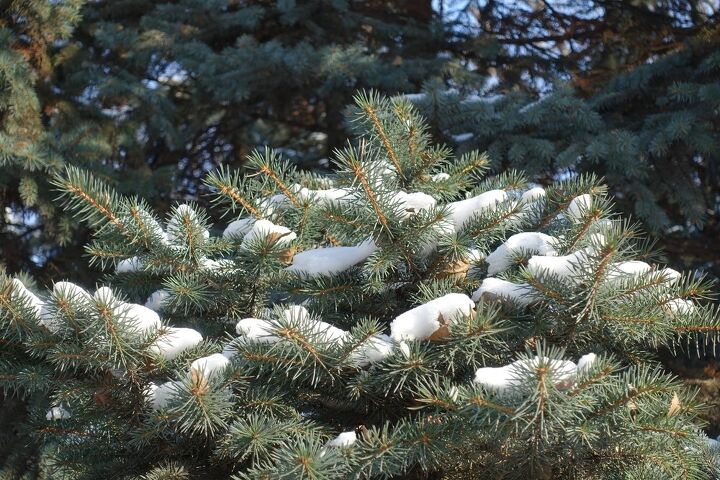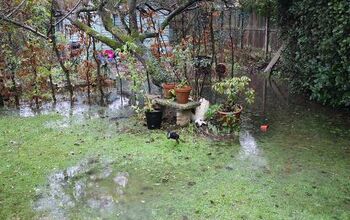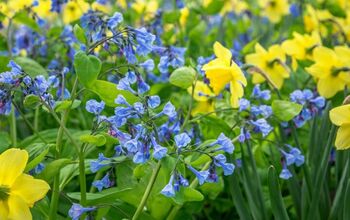Plants That Survive Winter

If you're a plant-lover, then you can relate to the pain of watching your favorite plants wither away when temperatures plummet. That doesn’t need to be the case, however, as many plants can survive and even thrive throughout cold weather. So, what are some of the best plants that survive winter?
The best plants that survive winter include peonies, bee balms, catmint, hostas, and Colorado blue spruces. Coral bells, Spanish Dagger, Siberian iris, baptisa, and wild columbines can also survive winter. Evergreen plants like winter gem boxwoods and Green Mountain boxwoods can even continue to grow throughout winter as cold weather rarely affects them.
Don’t worry if some of your plants appear dead during winter. This is common for perennials and they will typically come back if the roots are healthy. Follow along as we highlight the best plants that survive winter.
What Plants Stay Alive In The Winter?
Whether it be coneflowers or winter gem boxwoods, there is no shortage of plants that survive winter. Let’s look at the best plants that can withstand cold weather and survive winter.
1. Peonies
Not only are peonies vibrant and colorful, but they are also strong enough to survive winter. They may not be as vibrant during winter, depending on where you live, but peonies will bloom again in the spring. However, it’s important to plant peonies in a spot with full sun, so they grow strong enough during spring and summer.
That way, they will have deep roots by the time temperatures drop in the fall and winter. Make sure to prune dead flowers and stems before the winter, so every bit of energy goes into the roots.
2. Bee Balms
Bee balms are known for attracting pollinators, and they are also able to survive winter. They are perennials, but they will only survive the winter and come back in the spring if you take great care of them. Bee balms rely on soil with excellent drainage and full-to-partial sunlight.
Your bee balms may appear dead during the winter, but they are fine if the roots are intact. If you’re concerned, simply check the roots to make sure they are still healthy. If the roots are brittle and rotten, you will need to plant more bee balms in the spring.
3. Catmint
Catmint is a visually striking plant known for its beautiful purple flowers. A perennial, catmint will come back year after year and survive the winter if you take great care of it. Catmint appears dormant during the winter if you live in a cold climate, but it’s able to survive most frosts.
Make sure to water your catmint and the surrounding soil one last time before the first frost of the year. This will help the roots retain moisture throughout the winter, so they bounce back quickly when spring comes.
4. Hostas
Hostas are among the most resilient plants, and they can survive and thrive throughout the winter. Depending on where you live, hostas may appear dormant during the colder months. However, hostas will still appear vibrant in many climates throughout the winter, they just may cease to grow until spring.
Hostas have deep root systems and rely on well-draining soil. Plant some hostas in an area with plenty of shade to ensure they grow to their best potential to survive winter.
5. Colorado Blue Spruces
Not only can Colorado blue spruces survive winter, but they can keep growing during cold weather. As the name suggests, these gorgeous plants come from Colorado, so they can naturally withstand frosts. These trees won’t lose any color during cold weather and they will stay vibrant longer than most of your plants throughout the winter.
6. Coral Bells
Coral bells are shade-loving plants that can survive winter in most zones. Even if they appear dormant, they should bounce back as vibrant as ever in the spring. However, coral bells don’t cease to grow in most zones during the winter, they may simply slow down.
Water your coral bells at least 3-5 times per week if you don’t get rain during the summer. This will keep them strong enough to have deep roots and healthy stems before the weather cools down.
7. Coneflowers
Coneflowers are a staple of any pollinator garden, and they can survive winter. Ideally, you should look for coneflowers because they are most likely to survive the winter. Hybrid coneflowers aren’t as hardy and may not stay strong enough to survive several frosts.
Don’t worry if your coneflowers seem to die after the first frost of the year. The roots should stay intact even if the flowers above the ground wither and appear dead.
8. Green Mountain Boxwoods
The classic look of Green Mountain boxwoods makes many homeowners covet them. However, the main selling point of these shrubs is that they can withstand the winter without a problem. Your Green Mountain boxwoods will stay healthy year-round if you put them in a spot with full sunlight.
9. Spanish Dagger
Spanish Dagger is a popular potted plant because of its dense, spiky leaves. Like many other yuccas, Spanish Dagger can survive cold temperatures throughout the fall and winter. The roots typically embed deep within the soil.
However, you should make sure that the soil is packed in tight. If not, then it may erode easily or even blow away in the wind. This will expose your roots and they will be less likely to survive the winter. Otherwise, you should have no problem if you leave your potted Spanish Dagger outside during cold weather.
10. Wild Columbines
Wild columbine is among the most resilient perennials, even if you live in a climate with harsh winters. They last for years and scatter seeds throughout your garden in many cases. This is great news if you want more wild columbines on your property without having to plant more.
However, your wild columbines may struggle to survive the winter if you leave them in full sunlight. They need partial shade to grow to their full potential.
11. Winter Gem Boxwood
With a name like winter gem boxwood, you know it’s the perfect shrub to survive winter. Much like Green Mountain boxwoods, winter gem boxwoods are barely affected by cold weather. They stop growing, but the leaves are unlikely to fall off during the winter.
Even if the leaves turn yellow and fall off, the roots should stay healthy throughout the fall and winter. They thrive in partial shade where they get a few hours of sunlight per day.
12. Siberian Iris
Siberian iris comes from Siberia, which is no stranger to cold weather. Because of that, these gorgeous flowers have adapted to survive the winter in almost any region. They can even survive sub-zero temperatures if the roots are strong.
Cut back your Siberian iris during the fall if some of the leaves and stems are weak. That way, the plant can direct its energy to the roots and healthy leaves to survive the winter.
13. Baptisa
Baptisa is one of the most colorful perennials you will find. It’s a low-maintenance plant in that it can survive in full or partial sunlight without much of a difference. Baptisa can even survive if the temperature drops below zero degrees Fahrenheit during the winter.
You can plant Baptisa at any time of the year if it’s warm. However, you will have the best results if you plant Baptisa in the spring. This will give the roots plenty of time to establish themselves so they grow deep well before the fall and winter.
Summing It Up
Peonies, bee balms, catmint, and hostas are among the best plants that survive the winter. Evergreen shrubs like green mountain boxwoods and winter gem boxwoods can thrive during cold weather. Consider plants like Colorado blue spruces, coral bells, baptisa, and Spanish Dagger if you want your garden to stay vibrant during the winter.
Related Guides

Nick Durante is a professional writer with a primary focus on home improvement. When he is not writing about home improvement or taking on projects around the house, he likes to read and create art. He is always looking towards the newest trends in home improvement.
More by Nick Durante



























